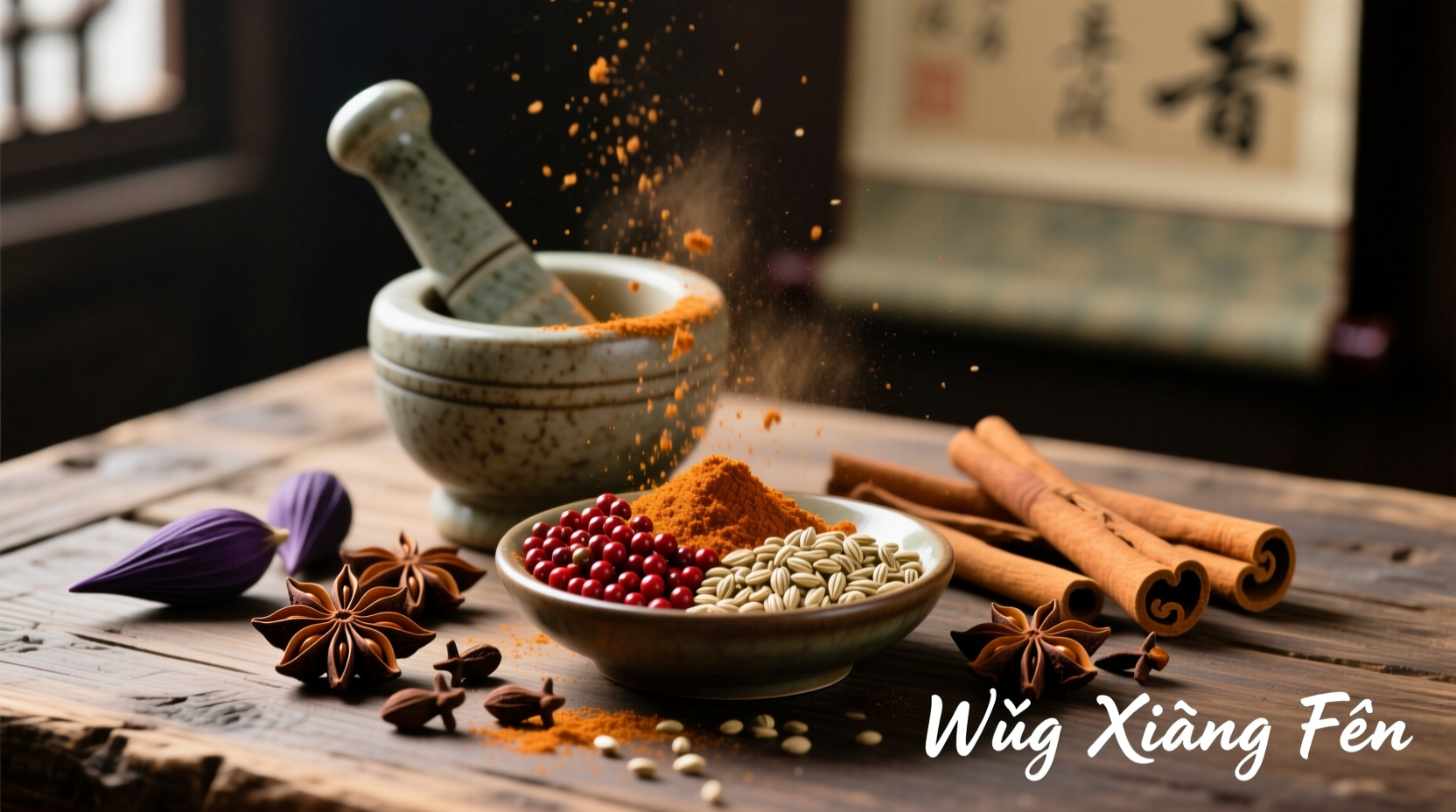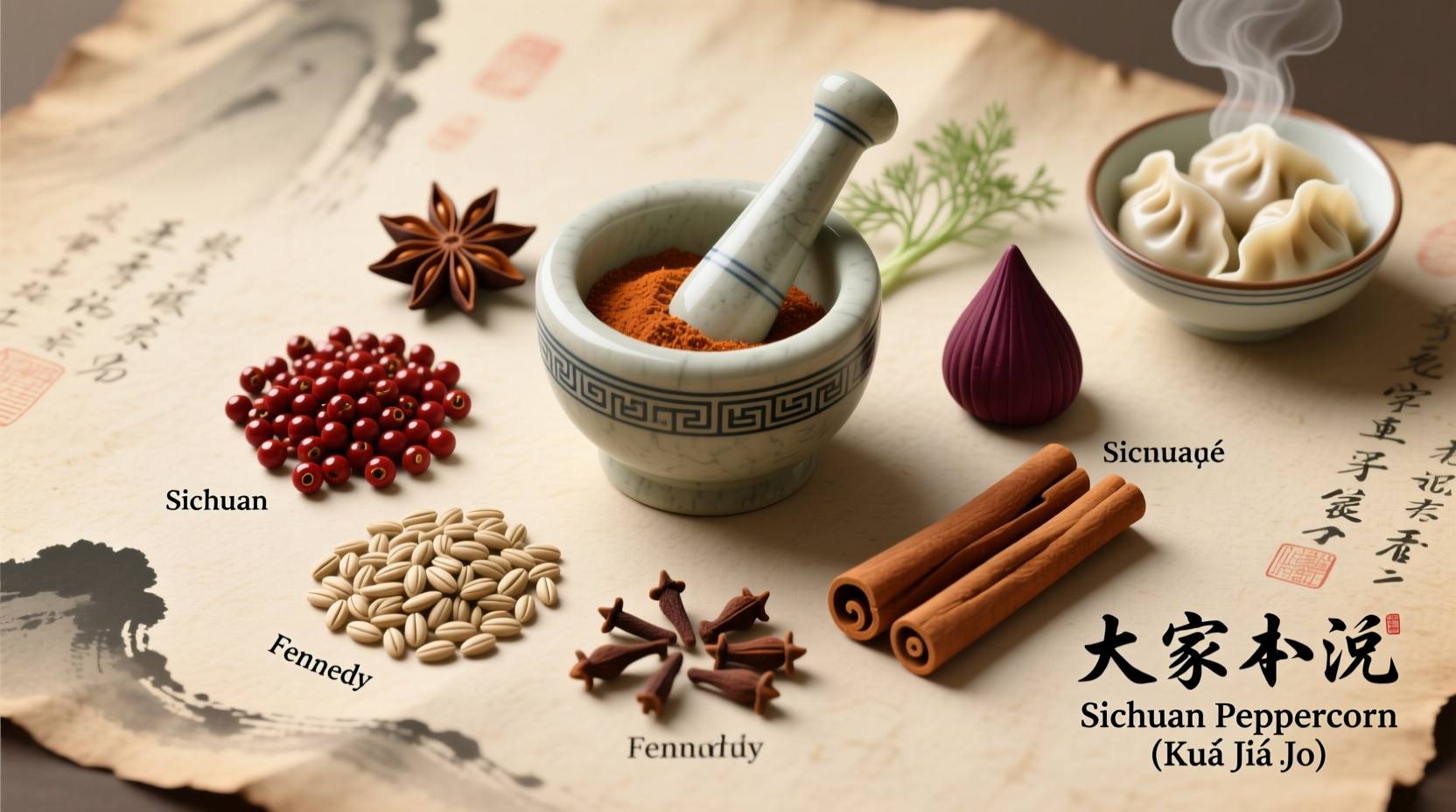Unlock the secrets of authentic Chinese cooking with this comprehensive guide to five spice powder. Whether you're a home cook exploring Asian cuisine or a culinary enthusiast seeking deeper understanding, you'll discover exactly what makes this essential blend unique, how to use it properly, and why it's been a cornerstone of Chinese cooking for centuries.
Understanding Five Spice Powder: More Than Just a Seasoning
Five spice powder isn't merely a collection of spices—it's a carefully balanced symphony of flavors rooted in Chinese culinary philosophy. This distinctive blend harmonizes five fundamental tastes (sweet, sour, bitter, pungent, and salty) while representing the five elements of Chinese cosmology (wood, fire, earth, metal, and water).
Unlike Western spice blends that often focus on heat or单一 flavor profiles, Chinese five spice creates complex depth that enhances rather than overwhelms ingredients. Professional chefs rely on this blend to add nuanced layers to braises, marinades, and roasted meats without dominating the dish's natural flavors.

The Core Components: What Is Five Spice Powder Made Of
While regional variations exist, the traditional Chinese five spice powder contains these five essential ingredients in balanced proportions:
- Star anise (80%): Provides the dominant licorice-like sweetness
- Cloves (10%): Adds warm, pungent notes
- Chinese cinnamon (5%): Contributes sweet warmth
- Sichuan peppercorns (3%): Delivers the characteristic tingling numbness
- Fennel seeds (2%): Offers subtle earthiness
| Ingredient | Traditional Percentage | Flavor Contribution | Substitution Options |
|---|---|---|---|
| Star anise | 80% | Sweet, licorice-like | Anise seed (½ amount) |
| Cloves | 10% | Warm, pungent | Allspice (⅓ amount) |
| Chinese cinnamon | 5% | Sweet warmth | Cassia bark (preferred over Ceylon) |
| Sichuan peppercorns | 3% | Numbing, citrusy | Black pepper + lemon zest (imperfect) |
| Fennel seeds | 2% | Earthy, slightly sweet | Dill seed (½ amount) |
Historical Evolution: From Ancient Tradition to Modern Kitchens
The origins of five spice powder trace back to the Ming Dynasty (1368-1644), when Chinese culinary philosophy began emphasizing balance in all aspects of cooking. Historical records from the National Palace Museum in Taipei document early spice combinations used in imperial kitchens.
During the Qing Dynasty (1644-1912), the blend became standardized as regional variations emerged across China. Southern Chinese provinces favored slightly sweeter versions with more star anise, while northern regions incorporated additional warming spices for colder climates.
The spice blend gained international recognition during the 19th century through Chinese diaspora communities. According to culinary research published by the University of Oxford's Food Studies department, five spice powder became a staple in Western kitchens following the publication of early Chinese cookbooks in the 1960s.
Practical Applications: How to Use Five Spice Powder
Understanding when and how to use five spice powder separates authentic Chinese cooking from superficial imitations. This versatile blend shines in specific applications while failing in others:
Best Culinary Uses
- Meat preparation: Rub on pork belly before roasting (Char Siu)
- Braising liquids: Add to master stock for red-cooked dishes
- Marinades: Combine with soy sauce, rice wine, and sugar
- Rice dishes: Sprinkle sparingly in clay pot rice
When to Avoid Five Spice Powder
- Delicate seafood dishes (overpowers subtle flavors)
- Vegetable stir-fries (unless specifically called for)
- Desserts (except in very small amounts for certain Chinese pastries)
- With strongly flavored cheeses (creates flavor conflict)
Professional chefs recommend toasting whole spices before grinding for maximum flavor. As Chef Liu Wei explains, "The magic happens when you heat the spices just until aromatic—about 30 seconds in a dry pan. This releases essential oils that bottled blends can't replicate."
Regional Variations and Authentic Substitutions
While the traditional blend remains consistent, regional interpretations offer fascinating diversity:
- Cantonese version: Slightly sweeter with more star anise
- Sichuan variation: Includes additional dried chilies for heat
- Taiwanese adaptation: Sometimes incorporates licorice root
- Vietnamese ngũ vị hương: Often includes additional pepper varieties
When authentic ingredients aren't available, proper substitution requires understanding flavor balance rather than simple ingredient swapping. For example, replacing Sichuan peppercorns with regular black pepper misses the characteristic mouth-numbing quality essential to authentic flavor profiles.
Creating Your Own Five Spice Powder
For the most authentic experience, make your own blend using these professional techniques:
- Source whole spices from a reputable Asian market
- Toast each component separately in a dry pan over medium heat
- Cool completely before grinding in a spice grinder
- Store in an airtight container away from light
Homemade blends maintain peak flavor for 3-4 months, significantly longer than commercial versions. The University of California's Department of Nutritional Sciences confirms that freshly ground spices retain 40% more volatile compounds than pre-ground alternatives.
Common Misconceptions About Five Spice Powder
Several myths persist about this essential Chinese seasoning:
- Myth: All five spice blends contain exactly five ingredients
- Reality: Some regional versions include additional spices while maintaining the five-element balance
- Myth: It's always extremely spicy
- Reality: The "spice" refers to flavor complexity, not heat level (though Sichuan versions may include chilies)
- Myth: It works in any Asian-inspired dish
- Reality: Japanese and Korean cuisines rarely use this blend—respect regional culinary boundaries
Where to Buy Quality Five Spice Powder
When purchasing pre-made blends, look for these quality indicators:
- Whole spices that you can grind yourself
- Transparent ingredient listing (no "spice blend" mysteries)
- Recent production date (within 6 months)
- Opaque packaging to protect from light degradation
Avoid products containing fillers like flour or anti-caking agents. Reputable brands will specify the regional origin of their spices, as quality varies significantly based on growing conditions.











 浙公网安备
33010002000092号
浙公网安备
33010002000092号 浙B2-20120091-4
浙B2-20120091-4